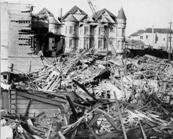Happy Chinese New Year!
Gung Hay Fat Choy! Year of the Monkey
Hello Everyone, New Year’s a good time for reflection. Below are some thought-provoking articles and a brilliant, creative, entertaining, funny, sad and inspiring music video about San Francisco gentrification. Cheers, Howard
 “Hello Ed Lee” (Official Music Video)
“Hello Ed Lee” (Official Music Video)
https://www.youtube.com/watch?v=Qa9KZzYetD4&feature=youtu.be
Comments from Singer:
Hello Folks, I’m thrilled to present my new music video, “Hello Ed Lee”. My simultaneous love and anguish for San Francisco has led to yet another piece based on this struggling little town. Tech is bumping, rents and evictions are off the charts and San Francisco is shelling out five million dollars for Super Bowl 50 … just two days away. Hello, Ed Lee? And yes, this is a parody (of sorts) … how else does one get Ed Lee’s attention??? This project came out of nowhere at the start of 2016. It was a collaboration between myself and filmmaker Jane Goldman, also featuring maps and documentation from the Anti-Eviction Mapping Project. Please share it far and wide! Here it is again for your clicking pleasure! “Hello Ed Lee”. Thank you folks! Candace
 HOODLINE: How Urban Renewal Destroyed The Fillmore in Order to Save It
HOODLINE: How Urban Renewal Destroyed The Fillmore in Order to Save It
http://hoodline.com/2016/01/how-urban-renewal-destroyed-the-fillmore-in-order-to-save-it?utm_source=individual-stories&utm_medium=email&utm_campaign=stories
After World War II, American cities were transfixed by a bold social experiment that came to be known as urban renewal.
Proponents, including leading liberals as well as business and civic interests across the country, believed razing and replacing large swaths of economically depressed older neighborhoods with bigger new buildings would result in lower crime, economic growth and a higher standard of living.
The backlash to these failures dovetailed with the growing anti-freeway movement of the same period, the nationwide civil rights and anti-war movements and dozens of other groups to create San Francisco’s modern progressive political identity.
Starting in the 1920s and 30s, federal housing agencies distributed color-coded “residential safety maps” so banks could identify the best places to back mortgages. Areas with old buildings or the “threat of infiltration of foreign-born, negro or lower grade population” like the Fillmore were outlined in red, a warning against granting loans there.
 The same day the Planning Commission’s proposal was released, inspectors dispatched by District Attorney Edmund G. Brown discovered “dozens of serious fire hazards” while inspecting Fillmore district buildings, reported the Chronicle. A task force of health and fire inspectors was created following a report by Brown declaring there were “100,000 violations daily in San Francisco of the State housing act and fire, building, health and safety codes.”
The same day the Planning Commission’s proposal was released, inspectors dispatched by District Attorney Edmund G. Brown discovered “dozens of serious fire hazards” while inspecting Fillmore district buildings, reported the Chronicle. A task force of health and fire inspectors was created following a report by Brown declaring there were “100,000 violations daily in San Francisco of the State housing act and fire, building, health and safety codes.”
Beyond physical dangers, the report suggested that residents of the blighted zone were also falling victim to moral decay. There were “71 bars, 45 liquor stores, numerous smoke shops and magazine stands suspected of gambling joints and bookies in disguise,” not to mention “‘hotels’ that accommodate members of the ‘world’s oldest profession.'”
“You have to read into the idea that these absolutely beautiful Victorian buildings were also blighted because they were populated by black people,” said Collins. “It’s amazing to me when you look back at the amount of housing that was removed.”
Broad fears over redevelopment also triggered a cascading series of regulations around housing and construction that all these decades later have generated one of the most complex approval processes of any city in the country.
 TRANS-ASIAN RAIL: Connecting Europe Asia
TRANS-ASIAN RAIL: Connecting Europe Asia
A Trans-Asian Rail is amazing—a world-changer through transport of goods. May ease political tensions too. Unlike California High-Speed Rail and San Francisco’s Central Subway, the Trans-Asian Rail is planned strategically for maximum effectiveness and constructed efficiently. China’s long-range visionary planning and infrastructure investments are worth studying. Below is background information about its history, international agreements, engineering etc.
A Hawaiian China-watcher’s perspective: “It will probably take Hawaii 10 years to complete our 26 mile rail at a cost close to US$10 billion. For the same period of time, using the following building method, China could complete 1,600 miles at 1/20 the cost per mile of what Hawaii is paying.”
Parenthetically, San Francisco’s Central Subway costs $1 billion per mile—taking money from the rest of Muni and cutting service citywide. Now, the schedule is delayed into 2019 and costs are under stress.
— Howard Wong
YouTube: China and Trans-Asian Rail (longer 10 minute version)
https://www.youtube.com/watch?v=bR-lVtyCtGE&app=desktop
Business-In-Asia: Trans-Asia Rail Link
http://www.business-in-asia.com/asia/tranasia_rail.html
Wikipedia: Trans-Asian Railway
https://en.wikipedia.org/wiki/Trans-Asian_Railway

